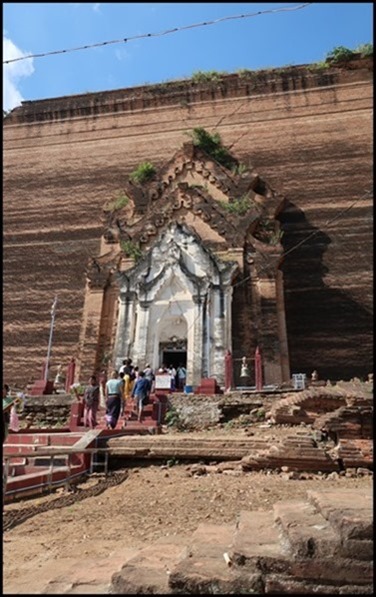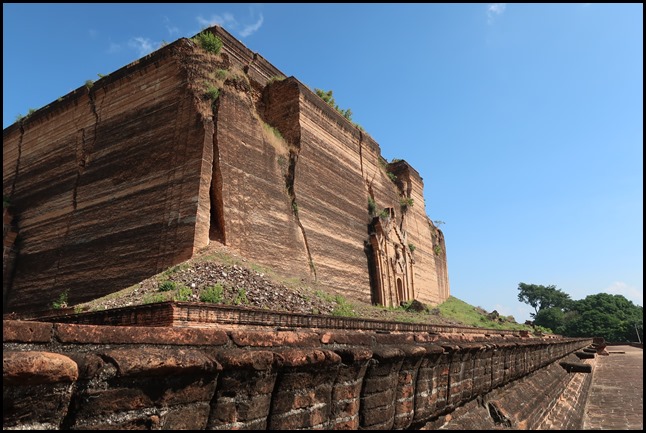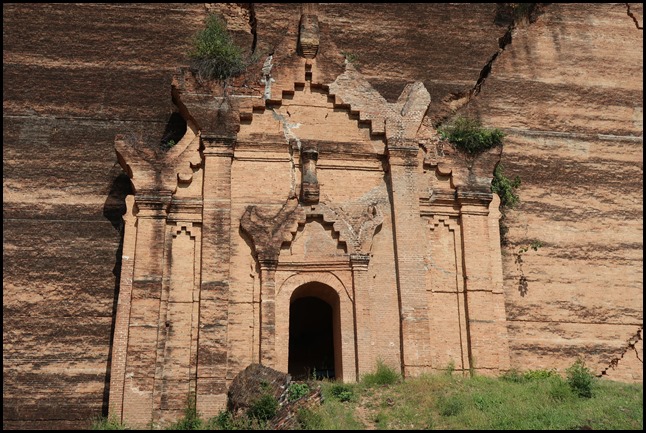Unfinished Pagoda

|
The Unfinished
Pagoda
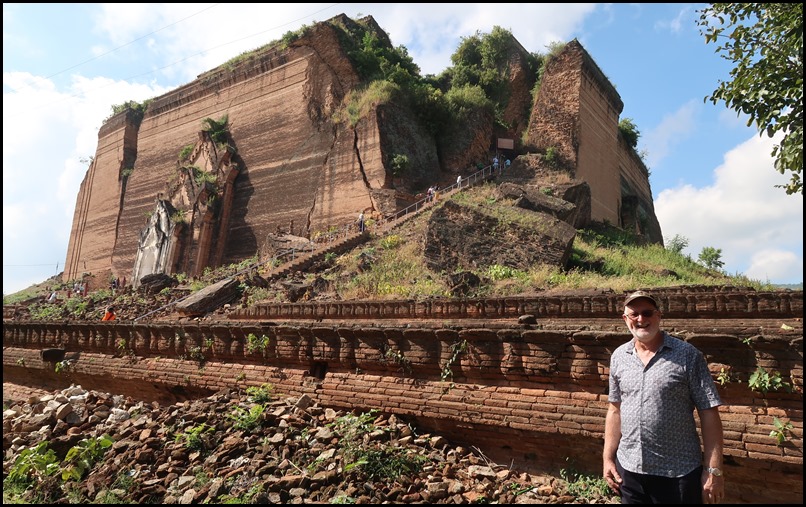 The Mingun
Pagoda is a colossal unfinished project started at
the end of the 18th century, destined to be the largest pagoda in the
world.
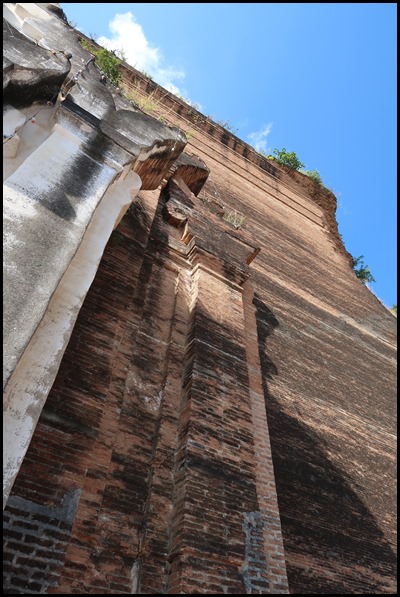 We headed to the centre of the front wall to visit the functioning shrine.
Looking up from here we really got a sense of the
size of this ‘beast’ at only a third of the intended
height.
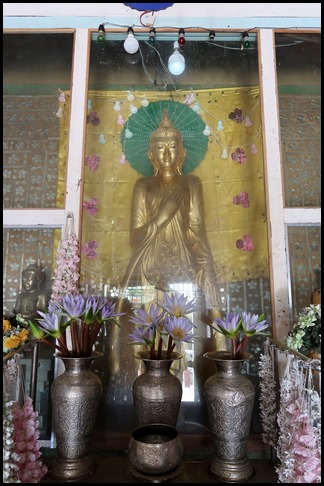 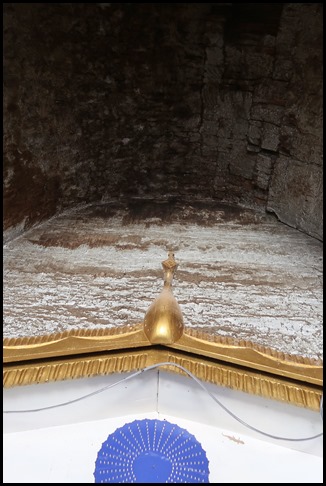 Buddha image, complete with electric bulbs and fresh
flowers. Looking up to the high ceiling.
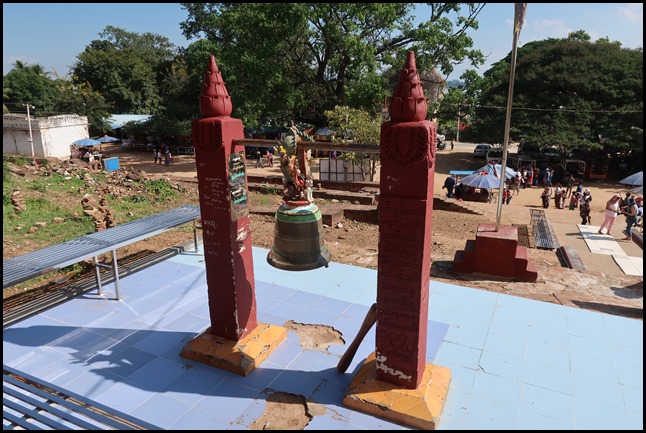 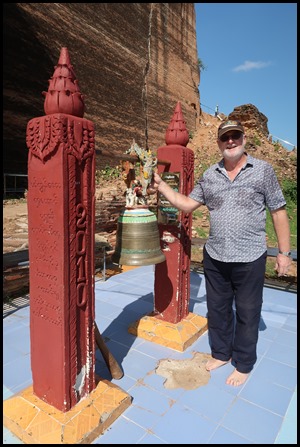 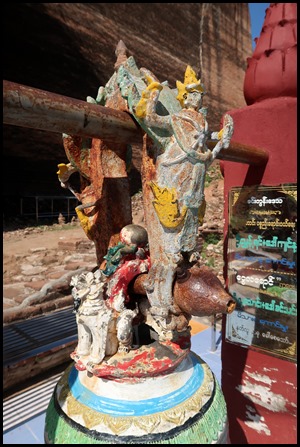 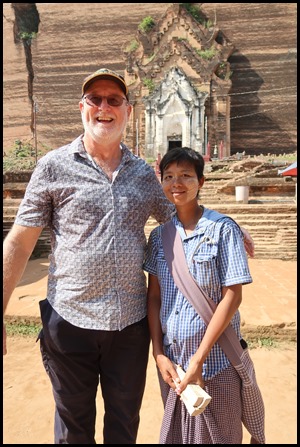 We stopped to admire the bell and a young lady joined us.
She was selling hand-painted school rulers to support her father, two sisters
and three brothers before returning to college at the end of the holidays. We
told her we were about to walk around the pagoda and she joined us, chatting as
we went.
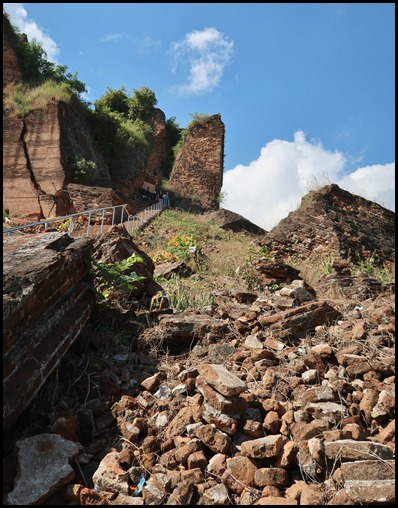 It is possible to climb higher up the
pagoda using a stairway to the right of the
structure.
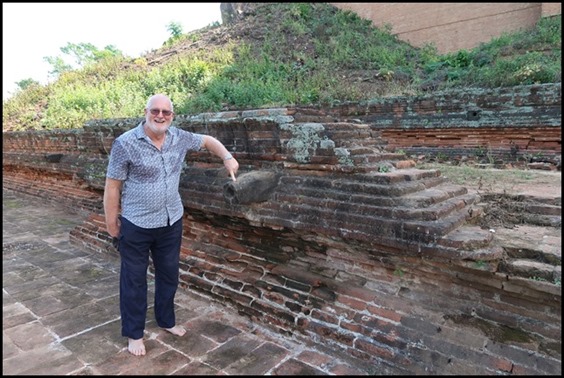 Along the right-hand wall we stopped
at a drainage pipe.
 The massive pagoda known as the Mantara
Gyi Pagoda or the Mingun Pahtodawgyi or The Great Royal
Stupa is, and would have been, an extraordinary sight on the banks of the
Irrawaddy River.
 The back wall really shows the huge
cracks caused by two large earthquakes.
Construction of the massive pagoda was
ordered by King Bodawpaya, the 6th King of the Konbaung dynasty. The king at
that time was at the peak of his power and achieved a number of great successes
by the end of the 18th century.
In 1784 he invaded Arakan and took the capital city of Mrauk U. Along with other treasures, he seized the Maha Muni (aka Knobby Knees), Burma’s most highly venerated Buddha image and brought it back to his Kingdom. He also ‘acquired’ a sacred Buddha tooth relic, something that his predecessors had not been able to do. To enshrine such an important relic, the King wanted to build the largest pagoda in Burma and the world. The King planned to have the pagoda stand one hundred and fifty-two metres high. The impressive scale of the Pagoda was probably also meant to serve as a demonstration of his might and power. The structure was of such great personal importance to the king that he left the matters of state to one of his sons, had a new residence built for himself on an island in the river and was on hand to personally oversee the construction. A very busy boy as along with his successes he managed to have two hundred and seven queens who produced sixty two sons and fifty eight daughters.....
We turn and see a huge crack at the back left corner. Our new friend tells us this happened during the severe 2012 earthquake and nothing will be done to support the pagoda or prevent even more rubble from spilling out. Such a shame.
Lovely brickwork. Work on the pagoda started in 1790. The pagoda reached a height of fifty metres, (one third of the intended height) when in 1797 construction was halted. There were probably several reasons why work on the project stopped. The massive size of the building meant it was much larger than anything else that had ever been finished so there may have been technical issues or difficulties. Insufficient labour, many of the slaves brought over for the construction project escaped. It is likely that there was insufficient funding to complete the pagoda, economic problems at the turn of the century due to the kings various battles. Perhaps most important was a highly respected astronomer foretold that once the pagoda was finished the king would die and his kingdom would perish. When the King died in 1819 the project was indefinitely halted and none of his successors resumed work on it. 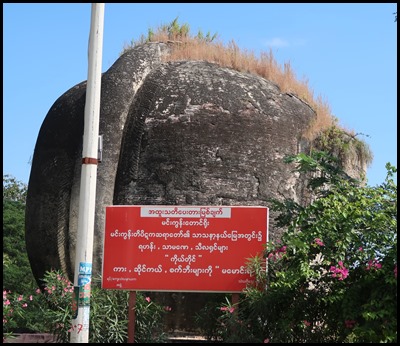 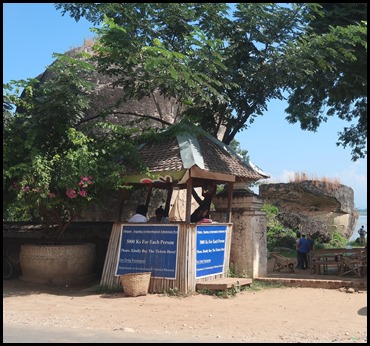 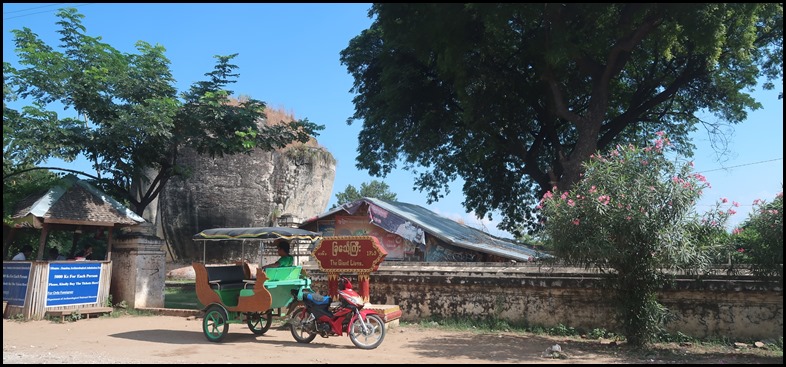 In front of the pagoda facing the river
are the remains of two giant Chinthe lions that would
have stood at nearly thirty metres tall to guard the temple. During the 1838
earthquake the heads of the leogryphs broke off and rolled into the
river.
ALL IN ALL A WONDER OF THE WORLD HAD IT BEEN
FINISHED
MASSIVE AND MASSIVELY
DAMAGED |
